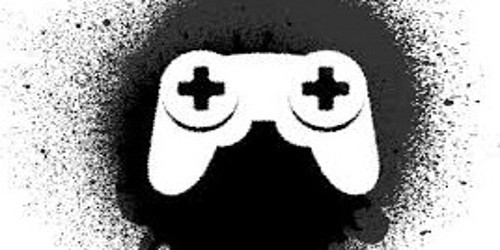The problem of drug addiction has grown to alarming proportions. Almost all young addicts’ parents had no idea their children would become victims of this dangerous vice. We’ve all heard that drug addiction has long been a scourge in the West.
Addiction to drugs is a very complicated and complex illness. It is distinguished by compulsive, at times uncontrollable drug craving, seeking, and use that persists despite extremely negative consequences. Many people develop a chronic drug addiction, with relapses possible even after long periods of abstinence.
Addiction to drugs begins with the act of taking drugs at a young age. A person’s ability to choose not to use drugs can deteriorate over time. Drug-seeking becomes compulsive, owing to the effects of long-term drug use on brain functioning and behavior.
What Leads to Drug Addiction?
(1) Affective. Insecurity and a lack of love: Nobody takes drugs to become an addict. They are typically used to get away from problems, whether real or imagined. Significant root causes have been identified as a lack of parental love at home, impaired and tense relationships between parents, and dictatorial treatment of children.
(2) Misuse of Money—Lack of Guidance:
Money is equally dangerous when it is easily available and accessible. They lead to habits like cigarette smoking, which is the first step toward drug addiction. The next stage, hash-smoking, comes on quickly. Your ‘culture mix’ will drive you to try more and more ‘harmless’ experiments. One of the causes is a lack of proper guidance for children.
(3) The most common cause is a desire to experiment. Just knowing how it tastes leads to the beginning.
(4) Peer Influence. The pressures of bosses or friends for the sake of the company also contribute to the start. The majority of drug addicts are men, but there are several female co-users who are also addicted to the drug. Most girls are persuaded to try it by their boyfriends. Few people attempt it under the pressure of senior students. The proportion is 1:25.
Drug addiction, or the compulsion to use drugs, can ruin a person’s life. Addiction frequently involves not only compulsive drug use, but also a wide range of abnormal behaviors that can disrupt family life, the workplace, and the larger community. Addiction can also put people at a higher risk for a wide range of other illnesses. These illnesses can be caused by behavior, such as poor living and health habits that are common in addicts, or by the toxic effects of the drugs themselves.
Because addiction has so many facets and disrupts so many aspects of a person’s life, treatment is a lengthy process. Drug treatment must assist the individual in discontinuing drug use and maintaining a drug-free lifestyle, while also achieving productive functioning in the family, at work, and in society. Effective drug abuse and treatment programs typically include a number of components, each addressing a different aspect of the illness and its consequences.
Three decades of scientific research and clinical practice have resulted in a variety of effective drug addiction treatment approaches. An extensive study revealed that drug addiction treatment is just as effective as a treatment for the majority of other chronic medical conditions. Despite scientific evidence proving the effectiveness of drug abuse treatment, many people believe it is ineffective. This is due, in part, to unrealistic expectations. Many people associate addiction with simply using drugs, and as a result, they expect addiction to be cured quickly, and if there is a riot, treatment is a failure. In reality, because addiction is a chronic disorder, the ultimate goal of long-term abstinence often requires sustained and repeated treatment.
Of course, not all drug abuse treatment is created equal. In addition, research has revealed a set of overarching principles that characterize the most effective drug abuse and addiction treatments, as well as their implementation.
There are numerous addictive drugs, as well as various treatments for specific drugs. Treatment also varies depending on the patient’s characteristics. Problems associated with a person’s drug addiction can vary greatly. People who are addicted to drugs come from a variety of backgrounds. Many have mental health, occupational, health, or social issues that make treating their addictive disorders much more difficult. Even if there are few associated problems, the severity of addiction itself ranges widely among people.
There are numerous scientifically supported approaches to drug addiction treatment. Behavioral therapy (such as counseling, cognitive therapy, or psychotherapy), medications, or a combination of the two can be used to treat drug addiction. Behavioral therapies teach people how to cope with their drug cravings, how to avoid drugs and avoid relapse, and how to deal with relapse if it occurs.
When a person’s drug-related behavior puts him or her at greater risk of contracting AIDS or other infectious diseases, behavioral therapies can help reduce the risk of disease transmission. For many patients, case management and referral to other medical, psychological, and social services are critical components of treatment. The best programs combine therapies and other services to meet the needs of the individual patient, which are shaped by issues such as age, race, culture, sexual orientation, gender, pregnancy, parenting, housing, and employment, as well as physical and sexual abuse.
Behavioral therapy, medications, or a combination of the two can be used to treat drug addiction. Opioid addiction treatment medications such as methadone, LAAM, and naltrexone are available. Individuals addicted to nicotine can use nicotine preparations (patches, gum, nasal spray) and bupropion. The best treatment programs offer a combination of therapies and other services to meet the specific needs of each patient.
When patients have co-occurring mental disorders such as depression, anxiety disorder, bipolar disorder, or psychosis, medications such as antidepressants, mood stabilizers, or neuroleptics may be critical for treatment success. Treatment can take place in a variety of settings, in a variety of forms, and for varying lengths of time. Because drug addiction is typically a chronic disorder with relapses, short-term, one-time treatment is frequently insufficient. For many, treatment is a long-term process involving multiple interventions and abstinence attempts.
Almost all addicted people believe that they can stop using drugs on their own at first, and the majority of them try to stop without treatment. However, the majority of these attempts fail to achieve long-term abstinence. Long-term drug use, according to research, causes significant changes in brain function that last long after the individual stops using drugs. These drug-induced changes in brain function may have a variety of behavioral consequences, including the compulsion to use drugs despite negative consequences, which is a defining feature of addiction.
Long-term drug use causes significant changes in brain function that last long after the individual discontinues use. Understanding that addiction has such a significant biological component may help to explain why it is so difficult for people to achieve and maintain abstinence without treatment. Psychological stress from work or family problems, social cues, or the environment can interact with biological factors to impede sustained abstinence and increase the likelihood of relapse. According to research, even the most severely addicted individuals can actively participate in treatment, and that active participation is critical to good outcomes.
Treatment for drug-addicted offenders during and after incarceration is increasingly being shown to have a significant beneficial effect on future drug use, criminal behavior, and social functioning, according to research. The case for integrating drug addiction treatment approaches into the criminal justice system is strong. Combining prison and community-based treatment for drug-addicted offenders lowers the risk of recidivism and relapse to drug use.
The vast majority of offenders involved in the criminal justice system are not imprisoned, but rather under community supervision. For those who have a history of drug abuse, drug addiction treatment may be recommended or required as a condition of probation. Individuals who enter treatment under duress have the same outcomes as those who enter treatment voluntarily, according to research.
Drug offenders are referred to treatment by the criminal justice system through a variety of mechanisms, including diverting nonviolent offenders to treatment, requiring treatment as a condition of probation or pretrial release, and convening specialized courts that handle drug-related cases. Another model is drug courts, which are only for drug offenders. The mandate includes arranging for treatment as an alternative to incarceration, actively monitoring treatment progress, and arranging for other services for drug-involved offenders.
The most successful models combine criminal justice and drug treatment systems and services. Treatment and criminal justice personnel collaborate on screening, placement, testing, monitoring, and supervision plans and implementation, as well as the systematic use of sanctions and rewards for drug abusers in the criminal justice system. After the release and during parole, incarcerated drug abusers must receive ongoing care, monitoring, and supervision.
Many drug addicts, particularly heroin and cocaine addicts, as well as injection drug users, are at increased risk for HIV/AIDS and other infectious diseases such as hepatitis, tuberculosis, and sexually transmitted infections. Drug addiction treatment is disease prevention for these people and the community as a whole.
Injectors who do not enter treatment are up to six times more likely to contract HIV than injectors who enter and stay in treatment. Drug users who enter and stay in treatment reduce risky behaviors such as sharing injection equipment and engaging in unprotected sexual activity. Treatment participation also provides opportunities for screening, counseling, and referral for additional services. The most effective drug abuse treatment programs offer HIV counseling and HIV testing to their patients.
Family and friends can play important roles in encouraging people with drug problems to enter and stay in treatment. Adolescents, in particular, benefit from family therapy. The involvement of a family member is a person’s treatment program can strengthen and extend the program’s benefits.
















